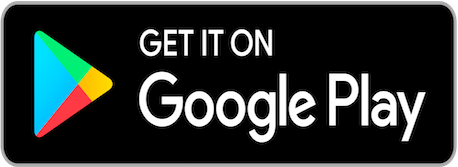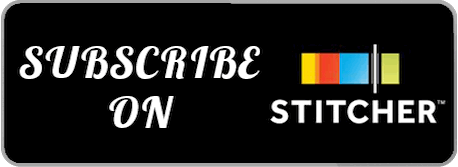Numbers are words are great, but there’s something about charts and graphs that takes your management to the next level. In this Mobile Home Park Mastery podcast we’re going to explore the many ways that you can use visual elements in buying and operating mobile home parks for maximum productivity.
Episode 338: Using The Power Of Charts And Graphs Transcript
Humans are very visual creatures. Having words or numbers on a piece of paper is all fine and good, but there's a bigger power when you can change and decode that information into something that's visually striking. This is Frank Rolfe with the Mobile Home Park Mastery Podcast. We're going to talk all about charts and graphs and how you can use those type of things to improve your ability to buy and operate mobile home parks. Now, why are charts and graphs so powerful? Well, we seem to have much better comprehension. We not only hear things, but see them as well. So you can talk a lot and you can put things on paper, but when you can help people to organize their thoughts visually, it typically results in a better ending. So what are some of the ways you can use charts and graphs with mobile home parks?
Well, the first one is, and you should do this on every mobile home park you ever buy, to distill the footprint of that park down into a chart which shows not only the streets but each individual lot. And from that, you can then color code all the information that's important to you about the mobile home park. You can color code occupied lots one color and vacant lots another. You can go ahead and then color code if you have any park owned rental homes where those are located at. You can put on there where the water cutoffs are, so in the event of emergency you have those ready. The bottom line is you can take every piece of information about your mobile home park and put it down to one single sheet of paper. Typically, the best way to do that is to make those 8.5 by 11 size, but on larger parks maybe ledger sheet sized or legal sheet sized. And then you can copy those with a color copy as many times as you want.
It's such a great tool to have with you. When you go out annually to walk your park and audit it, there's no easier, more effective way than having that chart, that graph of everything about your park right there in your hand. It's like a road map. You can walk around with that just like you would walk around with maybe a tour map if you are going and visiting the city. Another time you can use a chart or graph is with your monthly budget/actual difference meeting you should be having at least with yourself. What you do is you take your budget, that's one column, your actual results for that month's operations, the second column, and then the difference is the third column. And then you color code those. Color code the things that are going well, where you're exceeding budget, where you're doing better than what you thought, for example, with the green highlighter.
And then highlight those things where you're behind the budget, where you're not hitting the numbers that you promised yourself, maybe with an orange highlighter. And then just ignore the green and focus only on the orange because the whole purpose of the exercise is to help you steer your park to the financial performance that you wanted. So once again, we're visually looking, grasping how we're doing. Just looking down the columns on your budget/actual difference will tell you how you're doing. If it's a sea of green with no orange in that case, you're doing fantastic. Better yet, let's try to get where it's all green with no orange at all. Another thing you can do to use the chart and graph power is, if you have a bunch of vacant park owned homes, to put those in some kind of chart that shows you where they stand as far as getting them ready to go out the door.
Because with most mobile homes, whether new or used, there's some element of refurbishment or setting or skirting or decks that must be applied before you can get them sold. And a great tool, great way to do that is to have a chart probably on the wall in your office that your manager updates constantly where you have every single vacant home in the mobile home park down in a big, big list. And then you have the date it became vacant and the estimated date you'll have it ready and then the day it was ready and then perhaps the price of what you're going to ask for it. And then if it's sold, and the date that it took occupancy. Because what we're doing is we're racing the clock with the vacant home to make sure we get it back in service as quickly as possible to get that ground rent going again. And when you put it in a chart on the wall, what happens? Well, the manager can't get away from it. They see it throughout the day. Every time they turn around, there's the chart staring at them.
So it's a great management tool because it helps them get reinforced on what they're supposed to do to prioritize their time. Another great use of charts and graphs is to put in color all of your repair and maintenance issues. Taking the map we talked about a minute ago of the park and the lots and all the lots numbered and the roads, et cetera. Every time you have a sewer stoppage, every time you have a water break, chart where that is on that big map. So did the last sewage stoppage happen at lot 21? Then color code that on there, draw a little circle about that in some colored marker. And then later, let's say you have another sewage stoppage and whoa, look, it's back at lot 21 again. That helps gives us clues as to things we can do to more proactively solve these problems. Because if we can see that we have a sewage stoppage on a certain lot or part of the park in a repetitive fashion, then perhaps the problem is that the clay tile sewer pipe there may be caving in or there's root intrusion or there's something strange going on and maybe we're better off going digging down and fixing that.
So when you have repair and maintenance issues, don't just lump them all together and say, oh, well, we had this water leak somewhere. No, map that out because it may help you solve those problems and you'll be dollars ahead if you can resolve them on the front end. Another use of charts and graphs is with your banker because bankers love it when you take the information from the mobile home park and make it purely visual. So how do you do that? Well, graph out such things as your rates of return, your cap rate, your cash on cash, your cash flow. Show them all the important numbers that the park can generate, but do it in a fashion that's easy to see. Bankers look at a lot of material and they're stuck with lots of giant spreadsheets of numbers and this very boring stuff. If you give them not only the numbers, but also charts showing your projected performance, it's much easier for them to grasp.
For example, you can have a bar chart showing the progression of how much you plan on raising the rents each year. Anything you can do to give them a greater idea visually of what they're making a loan on, the better it will turn out for you. And then finally, on the topic of raising rents, it's always been a very successful method to help your residents have a greater grasp of what a great deal they're getting by showing them such things as rent increases graphically. Now, how do you do that? Well, first you have to gather the data, go to something like bestplaces.net and find out the stats for that zip code of single family home pricing, two bedroom apartment rent, three bedroom apartment rent. And then show on a sheet of paper a bar graph showing here's what our lot rent is. Here's what the lot rent will be. And now let's compare that to the two bedroom, the three bedroom apartment rent, as well as a single family home price. And what do you think it'll show? It'll show that your park is the greatest value on the earth.
Given the fact that the average apartment in the US is around $2,000 a month and the average lot rent in the US is around $300 a month, you'll look incredibly, incredibly like the best bargain anyone has ever seen. You will literally appear to be the dollar tree of housing. And that'll help reinforce to your customers, with those rent increases, what a great value they are getting. You know you're giving them a great value, but how often do they price shop? Maybe never. They may have never gone on to Best Places. They may have no idea what apartments rent for or houses go for. Many of them, when they see that chart, they'll be very excited about the deal that you are giving them. They're not going to then question the rent going up. They're going to think to themselves, how am I so lucky that the rents are this low?
The bottom line is that there's many, many aspects of the mobile home park business, both in buying and managing, that can be reduced down to charts and graphs. And they're an extremely powerful tool that every mobile home park owner should embrace. This is Frank Rolfe, the Mobile Home Park Mastery Podcast. Hope you enjoyed this. Talk to you again soon.




